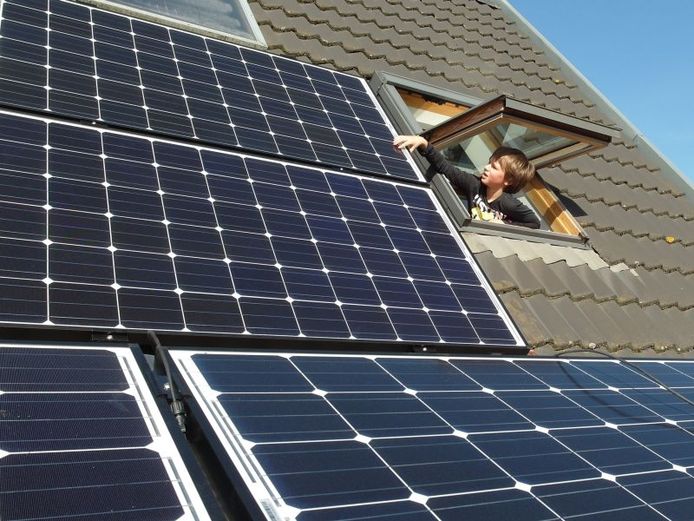2023 was a record year for the installation of solar panels in Belgium. But Wallonia needs to step up the pace if it is to meet its 2030 targets.
In its annual survey of solar panel installations in Belgium, the Energie Commune association reported a record-breaking year in the north and south of the country.
With +76% more new installations than the previous year in Wallonia, at 426 MWp (maximum power delivered), and +60% in Flanders, at 1.4 GWp, things are looking good, especially as the data is still incomplete. According to the association, almost 200 MWp could still be added due to accounting delays, L'Echo reports.
But to meet the targets set out in the 2030 National Energy and Climate Plan (14.8 GWp compared to just under 10 GWp today), specialists are still calling for serious obstacles to be removed, mainly in Wallonia and Brussels (where the rate of installation fell in 2023).
Flanders, according to Energie Commune, is home to almost 75% of Belgium's photovoltaic installations, compared with 22% in Wallonia and 3% in Brussels.
Related News
- Belgian solar power industry watches Longi layoffs with concern
- Renewable energy production broke records in Belgium last year
- A guide to installing solar panels and maximising the benefits in Belgium
The sector's stakeholders attribute this decrease to a number of cyclical factors.
"To sustain the 2023 figures, the increase in installations needs to become structural. Yet the residential segment accounts for 82% of the additional power installed this year in Wallonia, probably driven to take advantage of the meter running backwards before the end of the scheme," observed Marion Bouchat, energy adviser at Edora, the federation of renewable energy producers.
"We need concrete measures to continue to encourage households, but also to boost larger-scale installations," she continued.
Among the levers to be used by the Federal Government and the regulator, Edora stressed the urgent need for more incentive-based pricing and the obligation for the largest consumers to install panels, as is the case in Flanders. "The framework should also be less restrictive for large off-roof installations," suggests Bouchat.
The only upside for Edora is that the plans to modernise the distribution network operators, which are needed to integrate new production and consumption patterns – and avoid disconnections – are now being set in motion.
Delay in achieving targets
Energie Commune and Edora are adamant that unless these various obstacles are removed, the 2030 targets will not be met in Wallonia. In the region, the annual rate of installations will have to average around 500 MWp between 2024 and 2030 to achieve this target – a milestone that has not yet been reached.
Flanders, meanwhile, should be able to exceed its 2030 targets, even if its record figures for 2023 can also be explained by economic factors. Here, Energie Commune highlights the role of the "calls for support" mechanism for projects over 40 kW, which enabled commercial and industrial installations to grow by 180% in one year.

